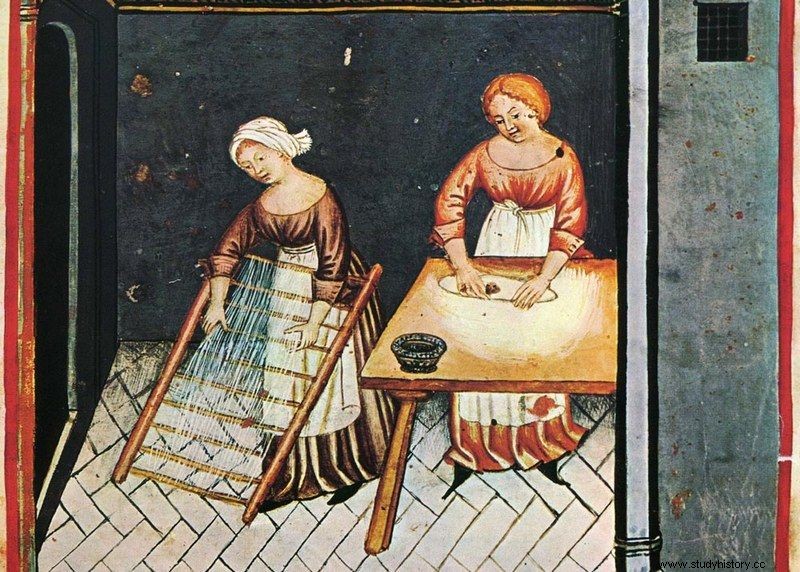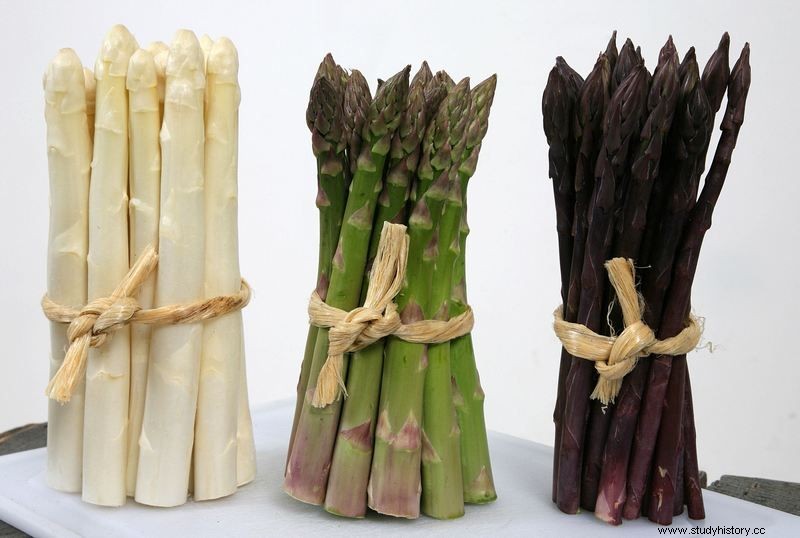We associate French cuisine with refinement, good wine, delicate and elegant dishes. Before the sixteenth century, Trans-Sequence tables did not necessarily look that way. In 1533, Catherine de 'Medicci (mother of our king Henry of Valois) married the future king of France, and with her an army of cooks moved to their new homeland. The sixteenth century kitchen revolutions have begun.
Catherine, like every self-respecting future queen, took a huge entourage with her to France. She was accompanied by friends and courtiers as well as many servants, including the above-mentioned cooks. What the chefs found there completely baffled them:her majesty would not touch it! We had to roll up our sleeves and get to work. The Italians started by introducing a lot of new flavors to the kitchen of the French court.
The beginnings were innocent. For the first time in France, duck in oranges and onion soup were served. However, when sweets originating from Italy entered the tables, French palates were speechless with delight.

Before the wedding feast, a lot of pasta had to be prepared (15th-century miniature from the "Tacuinum Sanitatis" textbook).
The best Medici cooks and confectioners prepared sorbets that were pleasing to the eye in color, as well as delicious ice cream, marmalades, fruit in syrup, cakes, cookies and sweet pasta. A real feast for the sight and smell, but above all for the palate.
What other flavors did Italian cooks give to the French? First of all, pasta is served with various sauces, both sweet and salty. It was served at the wedding feast of Catherine and Henry II. And in what edition? Topped with roast meat sauce and sprinkled with cheese. The second pasta dish appeared sweet, with butter, sugar, honey, saffron and cinnamon.

Catherine de Medici. Oh, she was a glutton!
What else is this classic? Veal topped with light sauces, crispy broccoli, beef fillets, meatballs, rice pudding, kidneys, lamb thymus (although I am not convinced by eating anyone's glands), rooster combs, sauces and tarts.
What's new in the kitchen and the flower bed?
With Catherine's arrival at the French court, vegetables favored by her majesty came to the Seine. The young Medici loved artichokes. This vegetable was widely regarded as a natural aphrodisiac, so the love of its height aroused scandal and outrage at the court. .
Catherine appeared in France in 1533, and a few years later artichokes began to be grown there. Maybe the large number of them in the queen's diet contributed to the fact that she had dozens of children with Henry II?
The second vegetable introduced by Katarzyna to the French court was broccoli . This plant, already cultivated in the times of ancient Rome, was known and eagerly eaten in Italy. The evidence that the chefs of Catherine de Medici served broccoli in France the earliest is the fact that the first mention of a green cauliflower cousin appears in French sources only around 1560.

Asparagus in French cuisine is also the work of Katarzyna (photo:Aceera BV, CC BY-SA 3.0).
The Queen's servants are also credited with introducing carp to the manor's menu royal, which has become a traditional dish of the French monarchs, served on various occasions.
Apparently the transfer of sweet peas and asparagus to French tables and even teaching the French to love truffles it is also the merit of the revolving Italian woman and her entourage. As none of these achievements can be proved with certainty, we leave them as a starting point for posterity.
With the arrival of Medici and her chefs at the royal court, the wider culinary habits also changed. The dishes began to be seasoned more gently, trying to bring out the natural aroma of roast meat rather than - as in the Middle Ages - to kill the real taste with sprinkled specifics. The choice was for delicate sauces and stocks.

The article is based on the book by Dave DeWitt entitled The kitchen of Leonardo Da Vinci (Poznań, 2007).
What did Kasia cook too?
Although Catherine of Medici was said to be voracious, she was politically strong and had St. Bartholomew (the famous slaughter of the Huguenots), it cannot be denied the enormous influence that she and her cooks had on French cuisine. During her time, court receptions began to be characterized by the refinement and lavishness typical of Italian courts.
Florentine dishes penetrated the capital of France, but Italian desserts probably won the strongest position. When, during the wedding celebrations of Catherine and Henry II, Italian confectionery masters served sorbets and ice cream (the queen received a different flavor every day), it was a real novelty for the French.
Meanwhile, in 1576 - when Catherine was already a stable matron - in Paris alone, there were two hundred and fifty ice-cream virtuosos, and when the warehouse of the ice so much needed in their craft was opened, the street on which it was located was called rue de la Glacière .

The title page of the famous cookbook La Varenne, which would not have been possible without Catherine de Medici (source:public domain).
The tastes of only one queen, who stayed on the Seine for 56 years, have permanently left their mark on the fate of French cuisine. About one hundred and twenty years after the wedding of our heroine to Henry II, a well-known French cookbook was written by a certain François Pierre de la Varenne. It can be safely said that it was a kind of requiem for the culinary achievements of Katarzyna Medycejska.
The flavors described in it differ significantly from medieval French cuisine. The heavy and sweet aromas of cinnamon, cardamom and ginger, which so far prevailed in exquisite dishes, have given way to completely different spices. Instead of imported, expensive additives with extremely overwhelming smells, simple spices from the garden appeared in the recipes - thyme, parsley, bay leaf.
So far ignored and considered too little noble for your tables, vegetables, such as green peas, asparagus, broccoli, cauliflower and our title artichokes, have become desirable additions to meats, sauces and broths. And this is how the foundations of French cuisine as understood today were laid ...
Source:
- Dave DeWitt, Da Vinci's Kitchen , Poznań, 2007.
